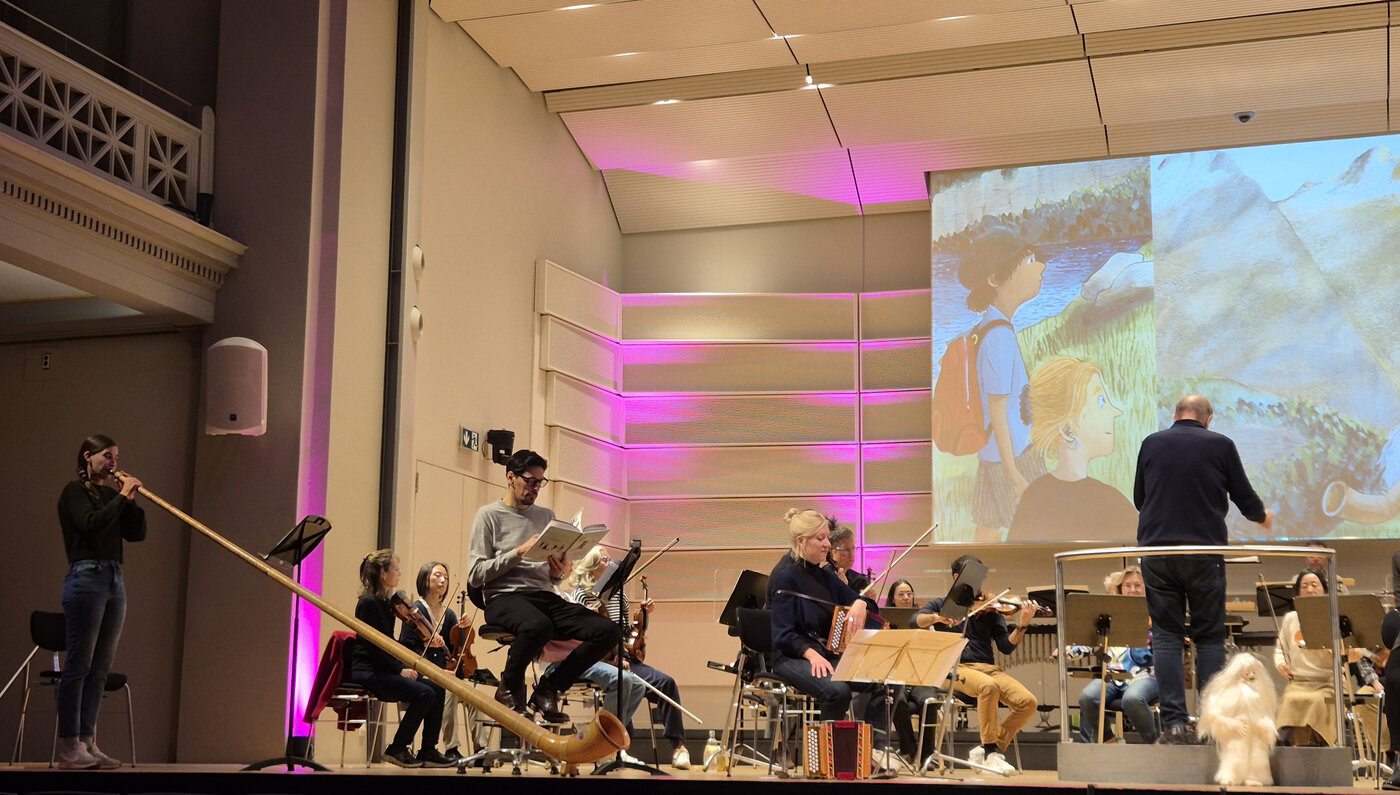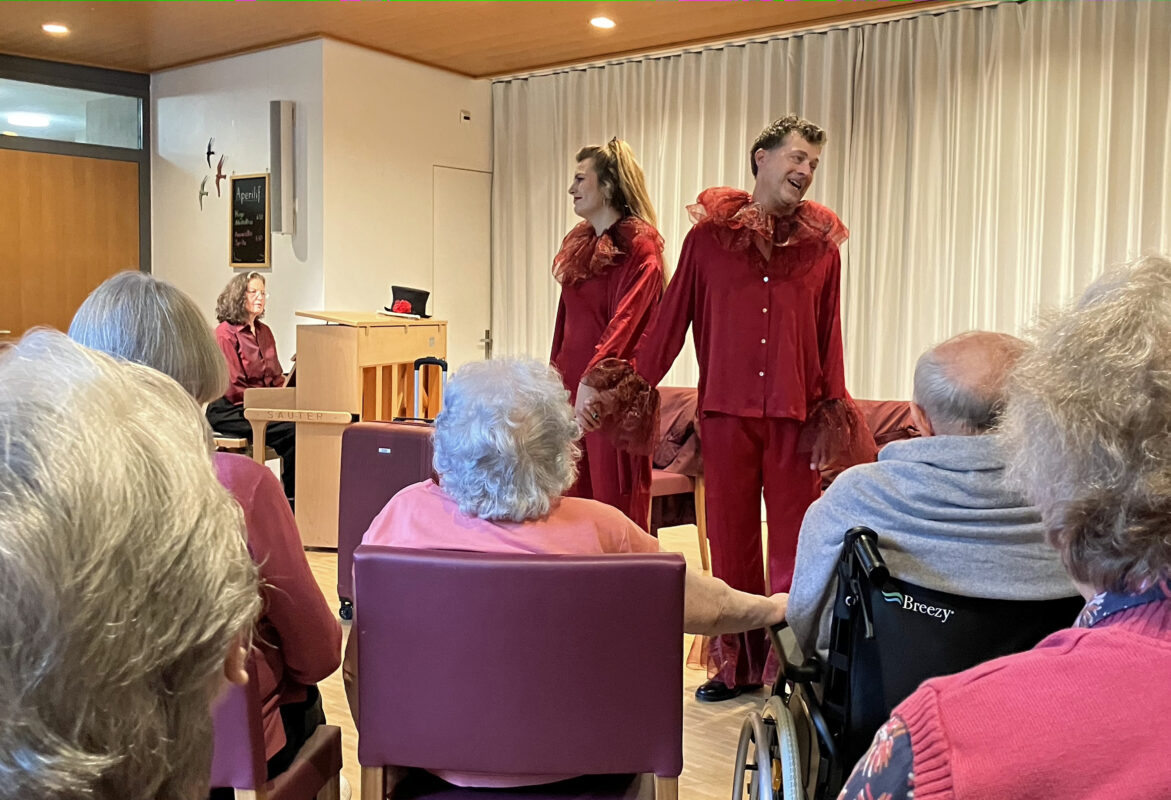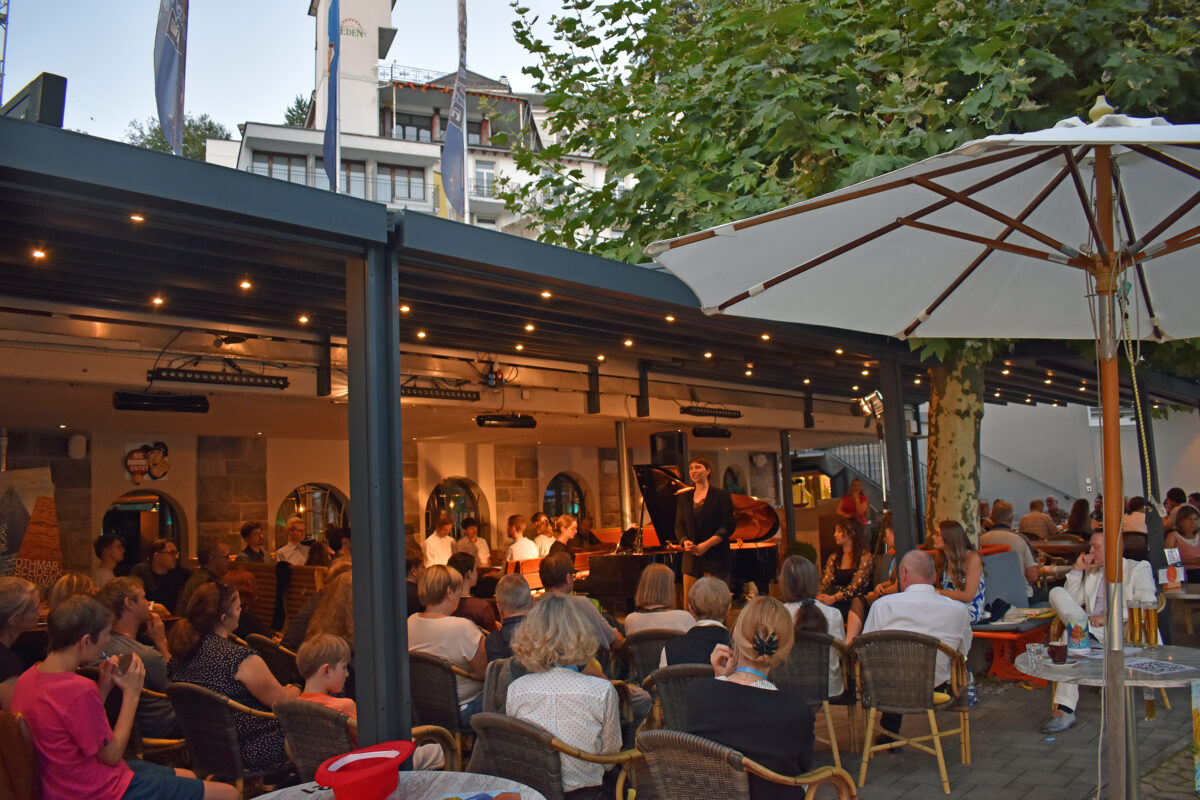A mythical creature explores folk music instruments
"Barboza and the sounding tree" is the name of Howard Griffiths' new music project for children. The Musikkollegium Winterthur presented it to numerous children and their families in the Stadthaus on November 1.

Howard Griffithsʼ musical stories awaken childrenʼs imaginations and tell of wondrous things. This time it's about the tradition of Swiss folk music: the hammered dulcimer, alphorn, Schwyzerörgeli and yodeling. But the instruments are not simply introduced. Barboza, the lively mythical creature from the Alps, discovers them on his journey through Switzerland.
When the musicians of the Winterthur orchestra come on stage with the conductor, the children applaud only timidly. Griffiths is not happy with this: "You probably don't know that this is a great orchestra and I am a famous conductor. So please give me a big round of applause! Even louder! I want it to be heard as far away as Zurich." The children clap vigorously, and lo and behold, from now on they always do it that way.
From singing tree to sounding wood
Barboza loves the cold winter, but sleeps in his cool cave all summer long. But this time he wakes up, steps outside and gradually thaws out in the sun. First he wants to visit the magical tree in the forest that can talk and sing. But, oh horror, the tree has been felled!
Together with the boy Ole, Barboza sets off in search of the wooden parts that were used to make the instruments: They travel by post bus and train, go to a dulcimer concert (Nayan Stalder), meet an alphorn player (Lisa Stoll) and get to know the virtuoso playing on a Schwyzerörgeli (Kristina Brunner). All the instruments are made from the magical wood. And when the yodeler (Franziska Wigger) Det äne am Bärgli the children join in.
The lively illustrations that Andrea Peter drew for the book of the same name can be seen large on the screen. The children love Barboza with his shaggy white hair and root for him. The story is grippingly told by Fernando Tiberine, with music by Fabian Künzli.
Close to history with stylistic breadth
What appeals to Künzli about composing for young ears? "Children are open-minded, open to new things and very honest," he says. "When they get bored, they just get loud." For Barboza He has been able to use a broad stylistic palette: modern folk music, impressionistic soundscapes, contemporary, theatrical and also rock and pop.
Fabian Künzli sets the story to music close to the text. The music is harmoniously woven into the narrative flow, the formal parts are self-contained and easy to grasp. The Musikkollegium plays with touching dedication, but the volume is problematic. On the one hand, the dulcimer soloist is barely audible, and when Tiberini has to speak into the music, he is difficult to understand.
Folk music instruments are in vogue
Griffiths produced the Barbosa story in Salzburg at the beginning of the year. More than 2000 girls and boys from 20 elementary school took part. The performances took place as part of the "School Concert Week", which the Mozarteum Orchestra organized for the second time. "We want to give children low-threshold access to classical music during this concert week," it says. "The offer is free - the crowds are very big - the performances are fully booked."
A recording of this Salzburg production is available as audio. This makes reading the story an acoustic experience for all those who cannot get to know Barboza in a performance. The book also contains an appendix with a factual section that introduces the Alpine instruments in a child-friendly way. Griffiths thus picks up on the trend that many young people want to learn to play the hammered dulcimer etc. Barboza and the ringing tree offers a contemporary and entertaining approach to folk music.
Howard Griffiths: Barboza and the ringing tree. A musical journey through Switzerland, music by Fabian Künzli, illustrations by Andrea Peter, Edition Hug 11817, Hug Musikverlage, Zurich 2024, ISBN 978-3-03807-145-7
Audio on Youtube:








